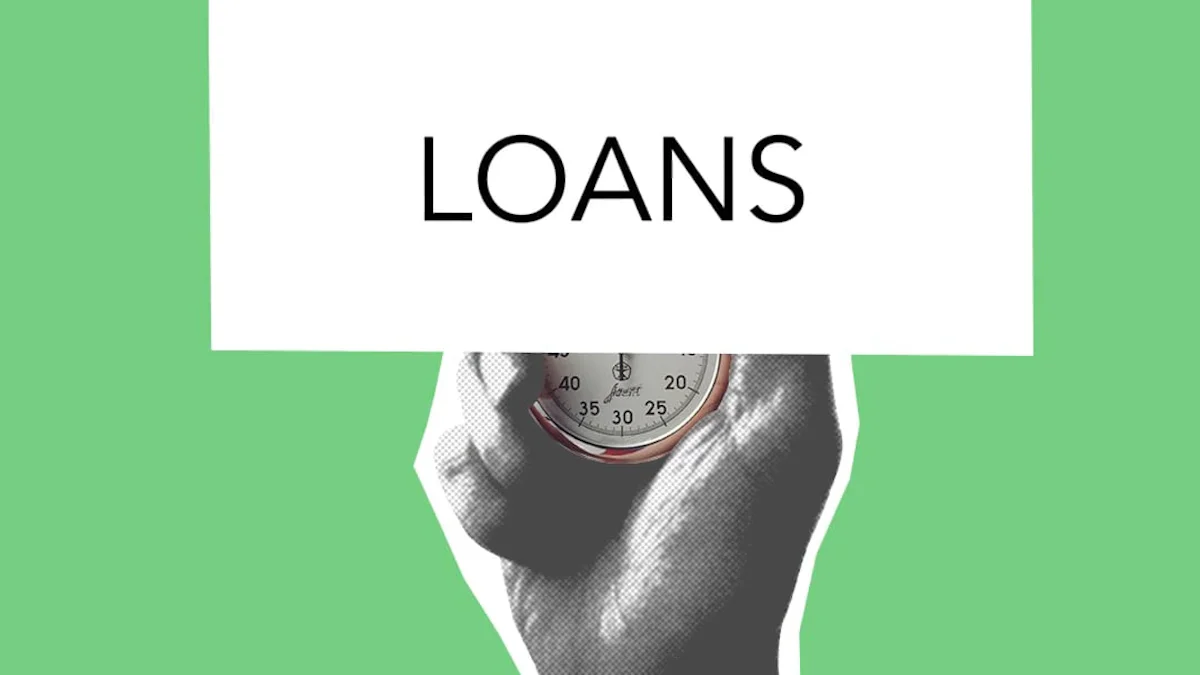Should You Use Balance Transfer Credit Cards to Pay Off Debt

Should You Use Balance Transfer Credit Cards to Pay Off Debt
Image Source: pexels
I’ve found that balance transfer credit cards to pay off debt can be a smart way to manage high-interest balances. These cards allow you to move debt from one account to another with a lower or even 0% interest rate for a limited time. This strategy works best when you commit to paying off the transferred balance quickly.
Key Takeaways
-
Balance transfer credit cards help you save on interest. Many offer 0% APR for a short time, so you can pay off the main balance faster.
-
Moving several debts to one card makes payments easier. This can lower stress and help you handle payments better.
- Make a repayment plan before moving your balances. Set monthly goals and don’t buy new things to stay focused and pay off debt quickly.
What Are Balance Transfer Credit Cards to Pay Off Debt?
How Balance Transfers Work
I’ve found that balance transfer credit cards to pay off debt allow you to move existing balances from high-interest credit cards to a new card with a lower or 0% introductory interest rate. This process can help reduce the amount of interest you pay, making it easier to focus on repaying the principal balance.
To initiate a balance transfer, I recommend following these steps:
-
Know how much you want to transfer.
-
Choose the right balance transfer card.
-
Understand the balance transfer terms.
-
Apply for the card and initiate the transfer.
- Create a repayment plan.
Each step is important. For example, understanding the terms ensures you know the promotional period and any fees involved. Once the transfer is complete, you can start paying down the debt without worrying about high interest for a limited time.
Key Features of Balance Transfer Credit Cards
These cards come with unique features that make them appealing for debt repayment. Most offer a promotional APR of 0% for a specific period, often ranging from 6 to 18 months. This feature can save you a significant amount of money on interest. However, many cards charge a balance transfer fee, typically 3% to 5% of the transferred amount.
Another feature I’ve noticed is the credit limit. It’s essential to ensure the limit on the new card is high enough to cover the amount you want to transfer. Additionally, these cards often require good to excellent credit scores for approval.
Using balance transfer credit cards to pay off debt can simplify your financial situation, but understanding these features is crucial to making the most of them.
Advantages of Using Balance Transfer Credit Cards to Pay Off Debt

Image Source: pexels
Save Money on Interest
I’ve noticed that one of the biggest advantages of balance transfer credit cards to pay off debt is the potential to save money on interest. These cards often offer a 0% introductory APR for a set period, which can significantly reduce the cost of carrying debt. For example, if you transfer a balance and take advantage of a 0% APR, you could save up to $741.69 in interest over 7 years and 2 months compared to paying off the same debt without a balance transfer. Here’s a quick comparison:
| Scenario | Savings | Time to Pay Off Debt |
|---|---|---|
| Using 0% Intro APR | $741.69 | 7 years 2 months |
| Without Balance Transfer | $4,302 | 7 years 2 months |
| After Intro Rate | $2,076 | 21 months earlier |
This table shows how much you can save by using these cards effectively. By reducing interest, you can focus on paying down the principal balance faster.
Consolidate Multiple Debts
I’ve found that consolidating multiple debts onto one balance transfer card can simplify repayment. For instance, if you have $15,000 in credit card debt spread across four cards with a 22% APR, transferring it to a card with 0% APR for 18 months could save you money. Even with a 3% transfer fee ($450), you’d only need to pay about $861 monthly to clear the balance within the promotional period. This approach not only saves on interest but also makes managing payments easier. However, keep in mind that consolidating debts may temporarily lower your credit score due to hard inquiries and new accounts. Over time, though, timely payments and reduced credit utilization can improve your score.
Pay Off Debt Faster
Using balance transfer credit cards to pay off debt can help you become debt-free faster. Without the burden of high-interest rates, more of your payment goes toward reducing the principal. For example, by transferring a balance and paying it off during the promotional period, you could eliminate your debt months or even years earlier than if you continued paying high-interest rates. This strategy requires discipline, but the reward is worth it.
Simplify Debt Management
I’ve noticed that simplifying debt management can reduce stress and improve financial well-being. Consolidating multiple balances onto one card creates a single, clear repayment plan. This makes it easier to track progress and avoid missed payments. Personally, I find that having fewer accounts to manage helps me stay organized and focused on my financial goals. Simplifying payments can also provide psychological benefits, such as reduced mental stress and a greater sense of control over your finances.
Disadvantages of Using Balance Transfer Credit Cards to Pay Off Debt
Balance Transfer Fees
I’ve noticed that balance transfer fees can add up quickly. Most credit card issuers charge between 3% and 5% of the transferred amount. For example, transferring $5,000 with a 4% fee would cost $200. Some cards offer promotional rates with lower or even waived fees, but these are less common. While a 0% fee is ideal, I consider 3% a reasonable cost if it helps save on high-interest payments. Before transferring a balance, I always calculate the fee to ensure the savings outweigh the cost.
Limited Duration of Promotional APR
The promotional APR period doesn’t last forever. Most balance transfer credit cards offer 0% APR for 6 to 18 months. I’ve found that this limited timeframe can create pressure to pay off the balance quickly. If I don’t clear the debt within the promotional period, the remaining balance starts accruing interest at the regular rate. This makes it essential to have a solid repayment plan in place before transferring a balance.
Risk of Accumulating More Debt
Using balance transfer credit cards to pay off debt requires discipline. I’ve seen how easy it is to fall into the trap of accumulating more debt. Once the original balance is transferred, the old credit card may tempt you to make new purchases. This can lead to a cycle of debt that’s hard to escape. To avoid this, I recommend avoiding new purchases until the transferred balance is fully paid off.
High Interest Rates After the Promotional Period
After the promotional period ends, the interest rates can be significant. I’ve noticed that many cards apply rates as high as 20% or more. If I don’t pay off the balance in time, the remaining debt starts accruing interest at this high rate. In some cases, deferred interest promotions can add even more charges, as interest from the promotional period gets added to the balance. This makes it crucial to understand the terms and conditions before committing to a balance transfer.
How to Use Balance Transfer Credit Cards to Pay Off Debt Effectively

Image Source: unsplash
Develop a Clear Repayment Plan
I always start with a clear repayment plan when using balance transfer credit cards. This ensures I can pay off the balance before the promotional interest rate expires. I focus on managing my credit utilization effectively and prioritize paying off the transferred balance over making new purchases. Here’s what I do:
-
Calculate how much I need to pay monthly to clear the balance within the promotional period.
-
Set up automatic payments to avoid missing due dates.
- Track my progress regularly to stay on course.
A realistic plan keeps me disciplined and helps me avoid unnecessary financial stress.
Avoid Making New Purchases
I’ve learned that making new purchases on a balance transfer card can lead to additional debt. Many cards don’t offer a grace period for new purchases, which means interest starts accruing immediately. Some purchases might not even qualify for the 0% APR promotion. To stay on track, I avoid using the card for anything other than paying off the transferred balance. This strategy prevents me from falling into a cycle of debt.
Pay More Than the Minimum Due
Paying more than the minimum due has always been my go-to strategy. It helps me pay off debt faster and save money in the long run. For example, if I pay $100 monthly instead of $40, I can reduce my payoff time from 17.5 years to just 6 years and save hundreds of dollars in interest.
| Monthly Payment | Payoff Time | Total Paid |
|---|---|---|
| $40 | 17.5 years | $3,000 |
| $80 | 7.5 years | $2,821.52 |
| $100 | 6 years | $2,617.87 |
This table shows how even small increases in payments can make a big difference.
Keep Track of the Promotional Period Expiry
I always keep an eye on the promotional period’s expiry date. Once it ends, the interest rate can jump significantly, sometimes exceeding 20%. To avoid this, I set reminders a few months before the period ends. This gives me time to adjust my repayment plan if needed. Staying aware of the deadline ensures I don’t get caught off guard by high-interest charges.
Compare Offers and Read the Terms Carefully
Before choosing a balance transfer card, I compare offers and read the terms carefully. Here’s what I look for:
-
The promotional APR and how long it lasts.
-
The standard APR after the promotional period.
-
Any balance transfer fees.
-
The credit limit and whether it covers my transfer amount.
- Additional fees, like annual fees or penalties.
Understanding these details helps me choose the best card for my needs and avoid surprises later.
I’ve found that balance transfer credit cards can be a powerful tool for managing debt when used wisely. Paying off balances during the promotional period improves financial health. Responsible use also builds a positive payment history and lowers credit utilization. These habits strengthen credit scores and create long-term financial benefits.
FAQ
What happens if I don’t pay off the balance during the promotional period?
If I don’t pay off the balance, the card’s standard APR applies to the remaining amount. This can lead to higher interest charges.
Can I transfer balances from multiple cards to one balance transfer card?
Yes, I can transfer balances from multiple cards, but the total must stay within the new card’s credit limit. I always check the terms before transferring.
Will a balance transfer hurt my credit score?
A balance transfer may temporarily lower my credit score due to a hard inquiry and increased credit utilization. Timely payments can help improve my score over time.
💡 Tip: Always monitor your credit score after a balance transfer to track its impact and adjust your financial habits accordingly.